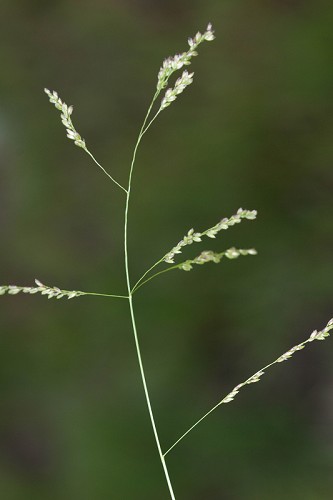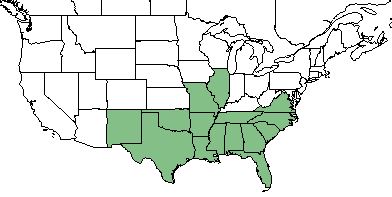Difference between revisions of "Steinchisma hians"
| Line 17: | Line 17: | ||
| range_map_caption = Natural range of ''Steinchisma hians'' from USDA NRCS [https://plants.usda.gov/core/profile?symbol=STHI3 Plants Database]. | | range_map_caption = Natural range of ''Steinchisma hians'' from USDA NRCS [https://plants.usda.gov/core/profile?symbol=STHI3 Plants Database]. | ||
}} | }} | ||
| − | Common Name(s): gaping panic grass<ref name="Weakley 2015">Weakley AS (2015) Flora of the Southern and Mid-Atlantic States. Chapel Hill, NC: University of North Carolina Herbarium.</ref> | + | Common Name(s): gaping panic grass;<ref name="Weakley 2015">Weakley AS (2015) Flora of the Southern and Mid-Atlantic States. Chapel Hill, NC: University of North Carolina Herbarium.</ref> gaping grass<ref name="USDA">USDA NRCS (2016) The PLANTS Database (http://plants.usda.gov, 16 January 2018). National Plant Data Team, Greensboro, NC 27401-4901 USA.</ref> |
==Taxonomic Notes== | ==Taxonomic Notes== | ||
Revision as of 13:41, 16 January 2018
| Steinchisma hians | |
|---|---|

| |
| Photo by John Gwaltney hosted at Southeastern Flora.com | |
| Scientific classification | |
| Kingdom: | Plantae |
| Division: | Magnoliophyta - Flowering plants |
| Class: | Liliopsida - Moncots |
| Order: | Poales |
| Family: | Poaceae |
| Genus: | Steinchisma |
| Species: | S. hians |
| Binomial name | |
| Steinchisma hians (Elliott) Nash | |

| |
| Natural range of Steinchisma hians from USDA NRCS Plants Database. | |
Common Name(s): gaping panic grass;[1] gaping grass[2]
Contents
Taxonomic Notes
Synonym(s): Panicum hians[1]
Description
Steinchisma hians" is a monoecious perennial graminoid.[2]
Distribution
S. hians is found from southeastern Virginia, south to Florida, west to Texas and Oklahoma, and south through Mexico and central America to Colombia. It is also found in southern South America.[1]
Ecology
Habitat
This species is found along the shores of streams, ponds, and lakes, as well as in low woods, cypress-gum ponds, floodplains, marshes, ditches, and seepage slopes.[1]
Phenology
Flowering occurs from May through October.[1]